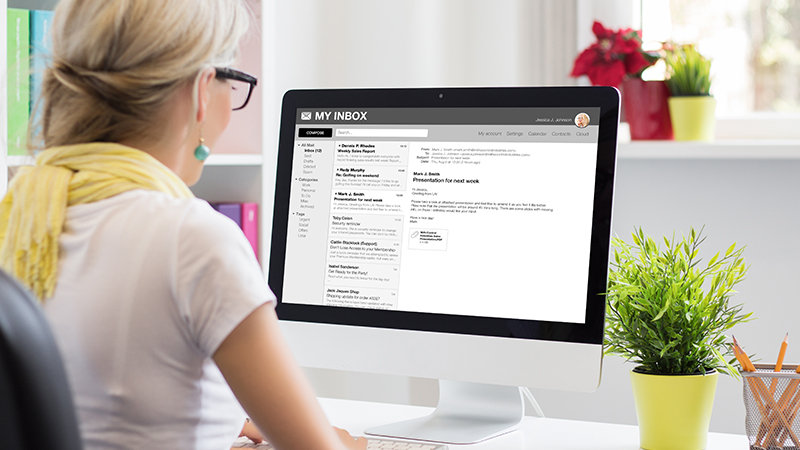OpenAI has launched GPT 5.2, a major model upgrade now available in both the API and ChatGPT. It is described as the company’s most…
Personalisation and Automation – The Next Iteration of a Communication Legend

Believe it or not, the history of email as a means to communicate dates back to the early seventies. Many are of the view that it wasn’t quite invented but merely evolved over time from very humble beginnings – after being borne out of necessity.
Older than the Internet itself, email has stood the test of time and is as relevant today, for both personal and business communication, as it was for the purpose it served some 50 years ago.
The ability to use this medium, as we do today, to share information in the form of text, documents, graphics and other rich media was a result of ongoing improvement – an evolution that continues today. This constant enhancement has secured a spot for email as the channel of choice for communication and marketing teams; for sound employee engagement within organisations, and for effective marketing that’s externally focused.
Despite all that the Internet has to offer, email remains the most important application and is still the most widely used facility it has. Hundreds of millions of people internationally use email, making it the hardest channel to ignore.
A single email exchange between two individuals may require a level of consideration and creativity to get a message across, but it is in a point-to-multipoint scenario where a blend of art and science is required to ensure that the emailed message attains the very purpose that it was crafted for. This is true for both employee engagement and marketing teams that disseminate bulk emailers.
Apart from the actual message, bulk emailing, although widely used, is by no means a straightforward and simple affair.
Properly setting up and managing accurate recipient databases, managing subscribe and unsubscribe lists and processes, and adhering to applicable compliance, in terms of the POPI Act locally and the European Union (EU)’s General Data Protection Regulation (GDPR), needs careful consideration.
All this while still ensuring that your message lands accurately and achieves what it set out to achieve. Perhaps the bulk emailing modus operandi needs to evolve too.
Levelling Up
The shift, from deploying only the fundamentals of bulk emailing and evolving it to a platform that would be more sophisticated and useful, is paramount to reaching new levels of recipient engagement. Personalisation, for instance, is an aspect that is key to more effective mailer campaigns.
In fact, research conducted by Accenture indicates that 75% of consumers are more likely to buy from a retailer that recognises them by name, recommends products or services based on past purchases, or knows their purchase history. This speaks directly to the need for personalisation.
In addition, other research, attributed to Instapage, states that 90% higher customer retention rates can come from omnichannel marketing automation. This implies that personalisation is the start for this kind of communication – companies can see great returns when they shift beyond personalising messaging to automating them too.
If, as an organisation, you’re set up for bulk emailing and are currently using it to reach your audiences, does that mean that your desired goal is being met optimally? How would you know if it is?
The answers to a few simple questions can lead you to discover the levels of efficiency and effectiveness of a bulk emailing effort.
- How sophisticated is the recipient database?
- Are you still populating and managing your database on a spreadsheet?
- Have you implemented an effective way to deal with and limit email bounce-backs?
- What is this effort costing your organisation in terms of resource allocation and time?
- Is there any unnecessary and wasteful expenditure associated with how you manage bulk emailing?
Email is, after all, a relatively affordable communication channel.
Other important questions to answer are whether your company complies with the applicable regulations that govern this space, and are you able to quantify and measure the effectiveness of each email campaign?
If the answers to a few or more of these questions are not favourable, then it’s time to rethink your bulk emailing strategy. Strategically plotting a path, where bulk emailing is concerned, is also vital for companies that have not yet started to use bulk emailing as a channel.
In our experience, the trajectory for growth in terms of email marketing skills for marketing heads and internal communication managers will advance, usually incrementally, from Bulk Communicator to Message Personaliser, and ultimately to Communication Automator.
What defines these levels of growth?
A Bulk Communicator creates and distributes basic emails. They need the basics to help them manage their database (subscribes and unsubscribes), and to create, send, and schedule their communications.
They’re not necessarily very experienced with benchmarks or analytics and have limited knowledge about personalisation or automation.
A Message Personaliser is someone who’s got a routine going with the basics of bulk email and has just started dipping their toes into personalising their messages using tagging, segmenting, and filtering lists.
They’ve started understanding the value of personalisation, but they need guidance on how to implement it in the system, education on best practices with their data, and examples of how they can use it in their messages.
A Communication Automator is an advanced email marketing professional who’s dabbled in personalisation enough to see the value in maximising it across the full customer lifecycle using automated journeys.
This is the end game in achieving the best outcomes for effective and optimised email marketing.
Conveniently, the journey to email automation does not need to be a long, lonely one. You can consult and partner with a platform that guides you towards mastering email marketing in your business.
An experienced industry expert in the field will analyse your current state of play and assist in plotting a way forward, with sound implementations that focus on delivery, measurement, and customisation of the right tools for your business.
This article is supplied and sponsored by Everlytic.
Read More: Everlytic gains more accolades for its leadership in multichannel messaging
Read More: Top language tips for better emails: The Best in Financial Services Marketing

